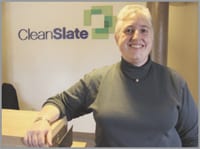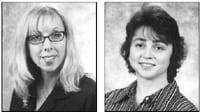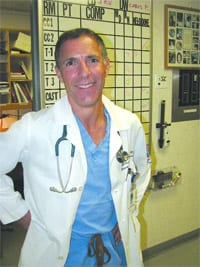Offering a New Hope CleanSlate Pioneers Innovative Treatment for Opioid Addiction
Over the past decade, the U.S. has seen an unprecedented rise in opioid abuse, including but not limited to heroin. According to the National Survey on Drug Use and Health, prescription opioids like OxyContin saw 2.4 million new users in 2004, the highest number for any drug category. And the number of drug-related deaths is also on the rise.
Sadly, the Commonwealth has one of the highest statistics of opioid abuse in the nation. OxyContin addiction has soared 1,000{06cf2b9696b159f874511d23dbc893eb1ac83014175ed30550cfff22781411e5} over the past decade, and the Mass. OxyContin and Heroin Commission reports that, between 2004 and 2007, more than 3,000 deaths were attributed to opioid overdose.
For many, opioid addiction is seen as a shadowy curse, far from the safety of suburban streets and stable homes. However, an alarmingly high statistic of opioid abuse is reported in Mass. teens, and those numbers too have risen in the last decade.
“It’s an epidemic across the country, really,” said Dr. Amanda Wilson. “There are probably as many as 200,000 people addicted to opioids; they estimate it to be 1{06cf2b9696b159f874511d23dbc893eb1ac83014175ed30550cfff22781411e5} to 2{06cf2b9696b159f874511d23dbc893eb1ac83014175ed30550cfff22781411e5} of the entire population of the country. And that’s a pretty startling number. About 10{06cf2b9696b159f874511d23dbc893eb1ac83014175ed30550cfff22781411e5} to 12{06cf2b9696b159f874511d23dbc893eb1ac83014175ed30550cfff22781411e5} percent of the country is addicted to alcohol, and then all other illicit substances combined, probably 3-4{06cf2b9696b159f874511d23dbc893eb1ac83014175ed30550cfff22781411e5}.”
Giving voice to another sad fact, she added, “I’ve not met anyone, through my talking about my company, who has not been affected or known someone. It’s that prevalent.”
Wilson’s professional lifetime in health care includes years as the chief of Medicine at Mercy Hospital; she also ran the Peer Review Board there. Today, she is the founder, president, and CEO of CleanSlate, a Western Mass.-based opioid-addiction treatment program with multiple locations and a groundbreaking process to combat the disease.
It’s called Suboxone, and Wilson explained how this treatment is the latest word in treating opioid addiction. The pharmacology is completely different from prior forms of drug-based addiction therapy, and while there is still a place in medicine for other modalities — methadone, as one example — her offices specialize in the use of this medicine, among others, and, in fact, built the company on it.
Recently, Wilson sat down with the Healthcare News to talk about this revolutionary medical therapy and to describe how she has built a similarly groundbreaking business around it. While the statistics for opioid addiction are proving to be a dark chapter in the U.S. and this region, Wilson’s business offers just what the company has chosen to use as its name — a CleanSlate on an otherwise destructive, and fatal, disease.
Tabula Rasa
The category of opioids includes many illicit and controlled substances, including heroin, opium, codeine, morphine, OxyContin, Vicodin, Percocet, and others. During her time at Mercy, Wilson said that it was an all-too-common sight for those substances to make their presence known in this region.
“As a hospitalist there, I saw many, many patients come in to the ER overdosed,” she said. “Not only from the opioids that had been obtained illicitly on the street, but also from the medications that they had been on for treatment, namely methadone.”
She told HCN that the opioid epidemic is hitting the Commonwealth particularly hard. “The rate of addiction has increased over the past 10 years something like 600{06cf2b9696b159f874511d23dbc893eb1ac83014175ed30550cfff22781411e5} in Massachusetts alone,” she said. “If people recognized how severe this problem is, where something like two people a day, every day, die in Massachusetts., they would find it disturbing.”
Annually, $5 billion is spent in the Bay State countering the effects of opioid addiction. Unfortunately, she said, more than $98 out of every $100 is spent on incarceration, with just $1.45 spent on prevention.
“It’s an unfortunate twist,” she continued, “and I saw enough at my time in the hospital that I was inspired to look for a treatment that could help this. Our mission is to get more treatment into the communities. And that’s where CleanSlate came from.”
The face of addiction simply cannot be stereotyped. It attacks across all social, class, and ethnic strata. An important component to her hopes in starting CleanSlate, Wilson said, is that patients’ medical concerns have often been marked by stigma.
“The main mission, from my end, is that patients are going to respond to treatment better if they are treated with compassion,” she said. “This category of patients has suffered tremendously, not just from the community at large rejecting them and marginalizing them, but even the medical community marginalizing them. I can’t tell you how many of my patients have gone into the ER with a legitimate problem, like appendicitis, as an example, and they were left in a hall for hours upon hours waiting to get care, because they were recognized to be someone with a drug-addiction issue. They were thought to be there seeking drugs, rather than for an acute medical issue.
“Right from the get-go,” she continued, “the mission was for patients to come into our offices and to see something spectacular, as though we were a high-end dermatology office. We’re not putting them into a back room somewhere, where they have to be hidden because of why they were there.”
Her providers are hired on the basis of maintaining that level of compassionate care, and Wilson said that, universally, her patients tell her how differently her offices treat them, with kindness and dignity.
Prescribed Change
Suboxone has been in medical use for close to 10 years, and Wilson said that it is not as commonly known as a drug therapy in contrast with methadone. “If you went out and polled 10 physicians,” she said, “maybe half would have heard about it.” That’s changing, however. Until 2009, an estimated 1 million doses were medically administered, but since then, the number has climbed to upwards of 8 million.
She emphatically clarified that methadone still has a place in opioid addiction therapy, and that there are people who will benefit from it. But the distinction between the two is clear.
Methadone, like heroin, or OxyContin, is what is known as a full agonist, meaning it stimulates the mu receptor in the brain 100{06cf2b9696b159f874511d23dbc893eb1ac83014175ed30550cfff22781411e5}. “It just stimulates it so slowly, with a slow onset and a slow offset,” Wilson explained, “that the patients are not deriving any euphoria from it. The thinking is that they’re not going to have withdrawal, but they’re also not getting high, so they can kick this habit with that.
“The unfortunate thing is that, when you use a medication that stimulates the receptors 100{06cf2b9696b159f874511d23dbc893eb1ac83014175ed30550cfff22781411e5},” she continued, “you can add anything you want. You can add OxyContin, or heroin, and sadly, some patients do. So they have a base where they can get really high, and unfortunately they can also die.”
The pharmacology of Suboxone is that the medication binds to those same mu receptors, but they basically block the receptor. It stimulates the receptor just enough — it’s a partial agonist, not 100{06cf2b9696b159f874511d23dbc893eb1ac83014175ed30550cfff22781411e5} — and it does so just enough that the patient does not feel sick, and has no symptoms of withdrawal.
“They feel awake, alert, and normal,” she said. “They tell me that they feel just the way they did before they ever used their substance in the first place. And it’s sitting there and binding so tightly to the receptor that, when they use heroin or any other substance on top of it, the substance has no effect.”
CleanSlate’s method of treatment is based on an outpatient model of therapy that involves a significant amount of counseling. Simply administering drugs is not a fix-all, and the patients undergo different phases of treatment, from stabilization into maintenance, which can last up to two to three years.
“In the context of the past 40 years of addiction treatment, the prevalent thinking has been that, if the patient has enough willpower, and they’re willing to go to AA, or NA, or some form of therapy, and go into groups, that they can kick this,” Wilson said. “That method of thinking does work beautifully for some people. Sadly, it’s a small percentage of people who are able to do that.
“It’s akin to cigarette smoking,” she continued. “There are people who can just quit cold turkey and stay off. But it’s a relatively small percentage. Over the past five to 10 years, there has been much more research showing that this is a brain-based, biochemical, neurochemical, chronic disease. And very probably, patients will do substantially better if they’re given medications to support them in conjunction with the same behavioral therapy that they were doing before.”
It takes a long time for the brain to stabilize from the disease of opioid addiction, she said. “A study has come out in the last year showing that, for any patient who has been on a medication-assisted treatment for opioid dependence, for example, there is a 100{06cf2b9696b159f874511d23dbc893eb1ac83014175ed30550cfff22781411e5} relapse rate if they’re taken off that medication before nine months.”
Rising to the Challenge
The business path that began with the simple idea of compassionate care started out as a leap of faith. Suboxone was and continues to be the primary treatment therapy targeting opioid addiction, but Wilson said that CleanSlate is offering multiple additional medical therapies to combat other types of addiction, including alcohol and cocaine addiction. The addition of Vivitrol to the panel of available treatments, for example, has broadened what can be offered to patients who suffer from polysubstance abuse.
Looking back at her venture’s beginnings, she said that the idea was to create two offices simultaneously, located in West Springfield and Greenfield.
“It was important to have those two locations at the start,” she explained, “because the feedback that I got from treatment providers in this area was that, if I just opened West Springfield, I will have people that travel from Pittsfield, New Hampshire, Leominster coming there. And if I opened only Greenfield, they’d come from the Springfield area.”
Those were tough days early on, she said. “I didn’t know how many patients we would have. I was being told by countless people that I would not be able to fathom the volume of people that will be coming. But when you’re opening a new business, you don’t know. It’s nerve-wracking. I hired one set of staff, and they went back and forth between the two sites. Within a month, I hired a second set of staff, and after three months, we had more patients than the staff I had at two sites could handle. So we now have, in two years, 60 employees, and it has just grown exponentially. The volume of patients out there is just something you can’t imagine.”
That causes her to lose sleep at night, she said. “That there are so many patients out there, and you only need to spend an hour in the clinic talking to them to understand how their lives have been so dramatically changed by this, that you think, this is the reason for doing what we do.”
Growth has come for the company as a result, and Wilson joked that her administrative team helps keep her passion for expansion in perspective. It’s a matter of business logistics that keeps CleanSlate in a slow, steady growth mode.
“You have to have a stable business, with balance,” she explained. “I care very much about my employees, and don’t want them to fall apart with the stress of trying to open too many too fast. I personally would love to open a site a week; that’s my vision. And then my COO and VP of medical affairs and all the other stellar staff have to keep my vision in check, and say how quickly we can train.”
CleanSlate has grown from those first two offices; there are currently additional locations in New Bedford and Bloomfield, Conn. However, plans are on the way for several other facilities. And the treatment model has expanded to encompass other forms of addictive therapy. But Wilson said that she acknowledges the success of other professionals to help in what keeps her awake at night.
“We are creating relationships with well-established, well-respected, large community-resource organizations that do counseling, for example, that offer intensive outpatient therapy, that have done group work for years,” she explained. “I’m trying to create relationships with them, where I say, ’you keep doing what you’re doing. I’m going to offer this piece of it, which is relatively new on the block, and let’s collaborate on that.’”
Wilson said that the business expansion has also led to changes in her operation. “It has evolved in terms of where we’ve put offices, or how patients are seen, and our frequencies of appointments … all that has evolved,” she explained. “We’ve gotten better and better at understanding what patients need.”
But one thing that will not change is her commitment to compassionate care, for an epidemic that affects everyone in some way. “If you don’t do it with that first,” she said, “then you have nothing.”



